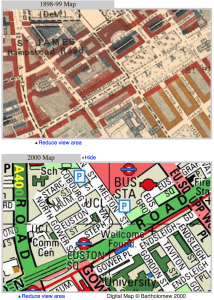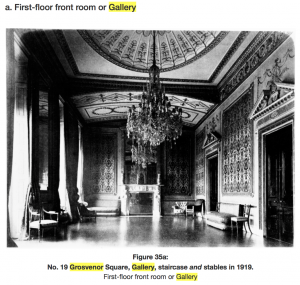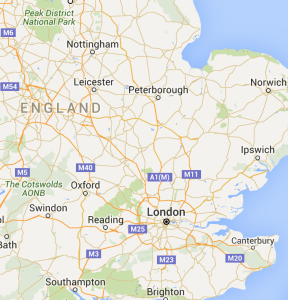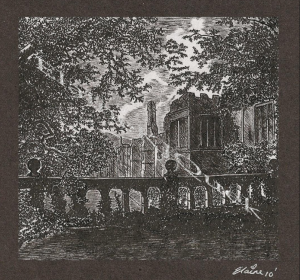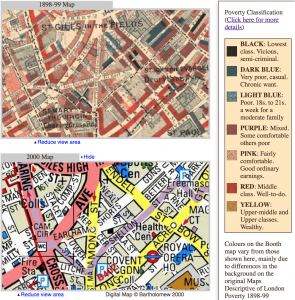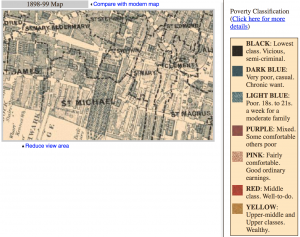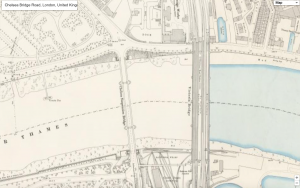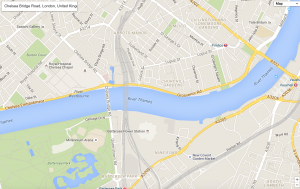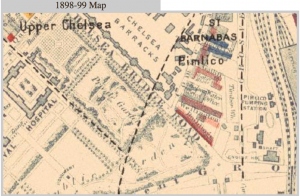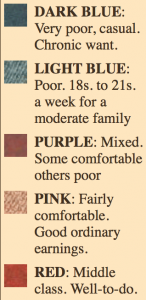The Vane family (Sibyl, James, and their mother) lives on the residential street, Euston Road. Their apartment is in close proximity to the Euston Station. According to the Charles Booth Online Archive, the area surrounding Euston Square is mixed. The majority of residents are Middle Class, well-to-do, and the rest are split between comfortable and poor and Upper class and wealthy.
The poverty maps are very important in understanding the life of Sibyl Vane. Mrs. Vane brought up her children with the intentions of bettering their lives. She does this through upgrading them in appearances. When James is leaving for Australia and remarks how he will be leaving London hopefully for good, Mrs. Vane objects his disdain. When he returns she hopes he will make a name for himself in London and become a gentleman. Mrs. Vane’s approval of Dorian stems from exactly that;
“Of course, if this gentleman is wealthy, there is no reason why she should not contract an alliance with him. I trust he is one of the aristocracy. He has all the appearance of it, I must say. It might be a most brilliant marriage for Sibyl. They would make a charming couple. His good looks are really quite remarkable; everybody notices them” (Chapter 5).
Her lack of familiarity with Dorian is erased by the fact he is established in society. This is the reasoning behind the location of their apartment. Mrs. Vane is indebted to Mr. Isaac yet they still live in an area with easy access to affluence. Euston Square is within walking distance and King’s Cross Station is nearby as well. residential Euston Road. Sibyl and James have access to all of London from their location. Therefore, she increases the opportunities for her family.
Euston Road, originally named New Road was constructed by the Metropolitan Railway Company. Tracks covered Euston Road entirely which, in turn, tore up the road. After completely the railway whilst simultaneously destroying the roadway, the company re-made the road, turning it into one of the finest in London. It was sanctioned by Act of Parliament in 1756 (Euston Road and Hempstead Road). The buildings on Euston Road had rather large yards with shrubbery in front to maintain a residential atmosphere. Euston Road was designed to accommodate the growing population of London. Although there were wealthy families living in the area, there was a represented lower class population, such as the Vane family.
The crime is abundant in the area. There are cases of stealing from one’s master, manslaughter, forgery, theft, deception, killing and disturbing of peace. From the information on Old Bailey Online, it is evident that there was a fair amount of criminal activity in the neighborhood. This is suggestive of the types of citizens who live in the area. Although there are parks nearby and Euston Square, there are still people there who are struggling to make ends meet. Euston Road is described as dreary in Picture of Dorian Gray, but the park is described as a place for swell people.
Thus, drab and fabulous are juxtaposed next to each other in Sibyl’s neighborhood. James walking with his sister on Euston Road is a “common gardener walking with a rose” (Chapter 5). Sibyl’s beauty contrasts her surroundings suggesting that she does not belong there and a place that better suits her is nearby (Euston Square/ Dorian Gray).
Works Cited
“Booth Poverty Map & Modern Map (Charles Booth Online Archive).” Booth Poverty Map & Modern Map (Charles Booth Online Archive). N.p., n.d. Web. 11 Dec. 2015.
“The Proceedings of the Old Bailey.” Results. The Proceedings of Old Bailey. Web. 11 Dec. 2015.
Walford, Edward. ‘Euston Road and Hampstead Road.’ Old and New London: Volume 5. London: Cassell, Petter & Galpin, 1878. 301-309. British History Online. Web. 9 December 2015.

